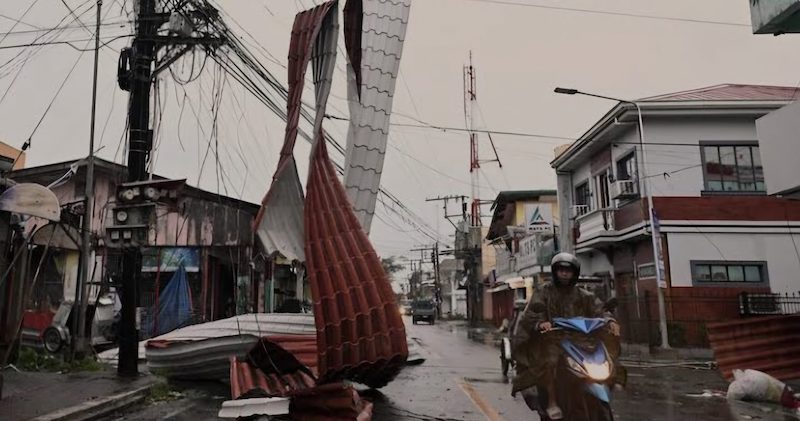Healthcare and Disaster Response Under Scrutiny.
The eastern Philippines is reeling from the aftermath of Super Typhoon Man-yi, which brought catastrophic winds and torrential rains, leaving communities shattered. As the storm ravages the archipelago, the Philippine government’s healthcare system and disaster response capabilities face a critical test.

Trail of Destruction
Man-yi, a Category 5-equivalent super typhoon, struck Eastern Samar and Leyte with wind speeds exceeding 200 kilometers per hour, triggering widespread flooding, landslides, and infrastructure damage. Thousands of families have been displaced, seeking refuge in government-established evacuation centers. Tacloban City, still recovering from Typhoon Haiyan’s devastating effects in 2013, bore the brunt of Man-yi’s fury.

Government Response and Healthcare Strains
The Philippine government activated emergency response protocols through the National Disaster Risk Reduction and Management Council (NDRRMC), issuing evacuation orders and taking preemptive measures. However, the disaster’s scale has pushed the healthcare system to its limits, exacerbating existing challenges like the COVID-19 pandemic. Healthcare facilities are overwhelmed, with hospitals in Tacloban and Borongan City operating at full capacity.
Relief Efforts
The Philippine government, international organizations, and local communities are rallying together to provide aid. The NDRRMC has deployed troops, rescue teams, and medical personnel, while the United Nations, World Health Organization, and NGOs have pledged support, providing emergency funding, medical supplies, food, shelter, and psychological support.
Challenges Ahead
Despite progress, challenges persist:
- Access to remote areas
- Limited resources
- Ongoing COVID-19 pandemic
Quotes from Officials
“We are working tirelessly to reach all affected communities.” – NDRRMC Spokesperson
“The international community’s support is crucial in this time of need.” – Philippine President

How to Help
Donate to:
- Philippine Red Cross
- UNICEF
- World Food Programme
Volunteer with:
- Disaster Response Teams
- Community kitchens
- Relief centers
Stay Informed
Follow official updates:
- NDRRMC
- Philippine Government
- International organizations
Share information responsibly.
Key Statistics:
- 200+ km/h wind speeds
- Thousands displaced
- Multiple towns affected
- Healthcare facilities overwhelmed
- Medical supply shortages
Sources:
- National Disaster Risk Reduction and Management Council (NDRRMC)
- Department of Health (DOH)
- Local authorities

















